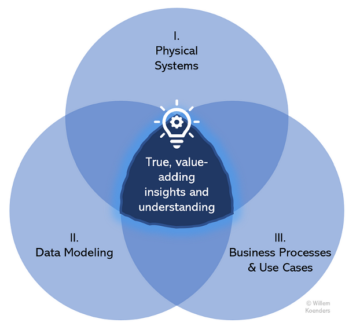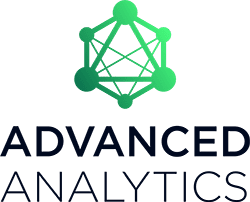
Organizations are increasingly turning to automation to achieve their most critical business goals. According to the 2023 State of Process Orchestration Report, 95% of teams credit automation for improving operational efficiency, while 94% acknowledge its role in enhancing customer experiences. To automate at scale, many teams implement a mix of technologies, tools, and platforms. One approach gaining momentum is hyperautomation, which involves vetting and automating processes, while orchestrating the use of multiple technologies.
However, it’s crucial to understand that hyperautomation cannot be fully realized without process orchestration. Process orchestration coordinates various elements within a business process, often tying multiple processes together. It helps organizations work with existing people, systems, and devices while achieving end-to-end process automation.
When integrated into a hyperautomation tech stack, process orchestration becomes a driving force for improved customer experiences and operational efficiency. Let’s explore why process orchestration plays such an instrumental role in achieving hyperautomation goals.
Understanding Hyperautomation
Gartner defines hyperautomation as, “a business-driven, disciplined approach that rapidly identifies, vets, and automates as many business and IT processes as possible. Hyperautomation involves the orchestrated use of multiple technologies,” including artificial intelligence (AI), machine learning, robotic process automation (RPA), business process management (BPM), integration platform as a service (iPaaS), and more.
Typically, hyperautomation is driven by business needs and aims to cover all activities within the business process lifecycle, from identifying and modeling the processes to be automated, to monitoring and improving processes. Automated processes often span various technologies and endpoints, such as APIs, RPA bots, and machine learning components – which is where orchestration comes in.
When hyperautomation is properly orchestrated, it can lead to a variety of positive business outcomes including:
- Improved efficiency: Automating manual processes and tasks enhances efficiency, reducing the time and resources required to complete them.
- Cost savings: Automation reduces errors and rework, leading to cost savings.
- Increased competitiveness: Automated organizations can operate more efficiently, gaining a competitive advantage.
- Enhanced customer experiences: Automated processes improve the speed and accuracy of customer-facing experiences.
- Enhanced decision-making: Automation allows employees to focus on more strategic tasks, improving decision-making capabilities.
Using Orchestration to Overcome Hyperautomation Challenges
Despite its benefits, hyperautomation poses some challenges, particularly for midsize to large enterprises. Two common challenges organizations of all sizes encounter are endpoint diversity and process complexity. Endpoint diversity describes a process involving multiple people, systems, and devices. If an endpoint within the process isn’t properly orchestrated, the entire process can slow down, or the process can break altogether.
Process complexity occurs when a process follows advanced logic. Most real-world processes don’t consist of a linear set of steps. For example, certain tasks within a process may need to be executed in parallel or occur within a certain window of time. If a process fails or is canceled, certain actions may need to be rolled back. Orchestration is critical in these use cases, since few business processes are straightforward.
In addition, when organizations are dealing with the multiple technologies in the hyperautomation tech stack, it can be easy to experience process silos. For example, a technology such as RPA might operate entirely on its own, instead of as a part of a larger, end-to-end process. It can be challenging, if not impossible, to achieve greater business goals with process silos in place. For example, siloed technologies don’t typically share data, which can limit visibility into end-to-end processes, making it difficult to identify failures or to improve.
To overcome these challenges, it is essential to think critically about the role that certain automation tools play in your technology stack. You can think of an orchestration layer as a catalyst for hyperautomation, or the “driver” of disparate hyperautomation technologies. Orchestration takes the wheel and ensures that end-to-end processes operate seamlessly, regardless of where processes originate or how complex they are to complete.
In sum, process orchestration serves as a catalyst for hyperautomation. It enables seamless end-to-end processes and accelerated digital transformation by coordinating various processes between people, systems, and devices. By embracing hyperautomation and process orchestration, organizations can achieve better business outcomes and maintain a competitive edge – automating complex business processes with scalability and flexibility.
- SEO Powered Content & PR Distribution. Get Amplified Today.
- PlatoData.Network Vertical Generative Ai. Empower Yourself. Access Here.
- PlatoAiStream. Web3 Intelligence. Knowledge Amplified. Access Here.
- PlatoESG. Automotive / EVs, Carbon, CleanTech, Energy, Environment, Solar, Waste Management. Access Here.
- PlatoHealth. Biotech and Clinical Trials Intelligence. Access Here.
- ChartPrime. Elevate your Trading Game with ChartPrime. Access Here.
- BlockOffsets. Modernizing Environmental Offset Ownership. Access Here.
- Source: https://www.dataversity.net/using-hyperautomation-and-process-orchestration-to-drive-optimal-efficiency/
- :is
- :not
- :where
- 95%
- a
- About
- accelerated
- According
- accuracy
- Achieve
- achieving
- acknowledge
- actions
- activities
- addition
- advanced
- ADvantage
- AI
- aims
- All
- allows
- altogether
- an
- and
- APIs
- approach
- ARE
- artificial
- artificial intelligence
- Artificial intelligence (AI)
- AS
- At
- automate
- Automated
- automates
- automating
- Automation
- back
- BE
- becomes
- benefits
- Better
- between
- bots
- Break
- business
- Business Process
- Business Process Management
- business processes
- by
- CAN
- canceled
- cannot
- capabilities
- cases
- Catalyst
- certain
- challenges
- challenging
- comes
- Common
- competitive
- competitiveness
- complete
- complex
- complexity
- components
- coordinating
- Cost
- cost savings
- cover
- credit
- critical
- crucial
- customer
- data
- DATAVERSITY
- dealing
- Decision Making
- Devices
- difficult
- digital
- Digital Transformation
- disciplined
- disparate
- Diversity
- Dont
- down
- drive
- driving
- easy
- Edge
- efficiency
- efficiently
- elements
- embracing
- employees
- enables
- encounter
- end-to-end
- Endpoint
- endpoints
- Enhances
- enhancing
- ensures
- enterprises
- Entire
- entirely
- Errors
- essential
- example
- executed
- existing
- experience
- Experiences
- explore
- fails
- few
- Flexibility
- Focus
- follows
- For
- Force
- from
- fully
- gaining
- Gartner
- Goals
- greater
- helps
- How
- HTTPS
- identifies
- identify
- identifying
- if
- implement
- impossible
- improve
- improved
- improving
- in
- Including
- increasingly
- instead
- instrumental
- integrated
- integration
- Intelligence
- into
- involves
- involving
- IT
- ITS
- jpg
- large
- Large enterprises
- larger
- layer
- lead
- leading
- learning
- lifecycle
- LIMIT
- logic
- machine
- machine learning
- maintain
- Making
- management
- manual
- many
- May..
- might
- mix
- modeling
- Momentum
- monitoring
- more
- most
- multiple
- Need
- occur
- of
- often
- on
- ONE
- operate
- operational
- optimal
- or
- orchestrated
- orchestration
- organizations
- outcomes
- Overcome
- own
- Parallel
- part
- particularly
- People
- Place
- platform
- Platform as a Service
- Platforms
- plato
- Plato Data Intelligence
- PlatoData
- Play
- plays
- poses
- positive
- possible
- process
- Process Automation
- Process Management
- processes
- properly
- rapidly
- real world
- realized
- reduces
- reducing
- Regardless
- required
- Resources
- Robotic
- Robotic Process Automation
- Role
- Rolled
- rpa
- Savings
- Scalability
- Scale
- seamless
- seamlessly
- serves
- service
- set
- Share
- silos
- since
- sizes
- slow
- some
- span
- speed
- stack
- State
- Steps
- straightforward
- Strategic
- such
- Systems
- takes
- tasks
- teams
- tech
- Technologies
- Technology
- that
- The
- their
- Them
- These
- they
- Think
- time
- to
- together
- tools
- Transformation
- Turning
- two
- typically
- understand
- use
- using
- variety
- various
- visibility
- Wheel
- when
- which
- while
- why
- window
- with
- within
- without
- Work
- you
- Your
- zephyrnet












